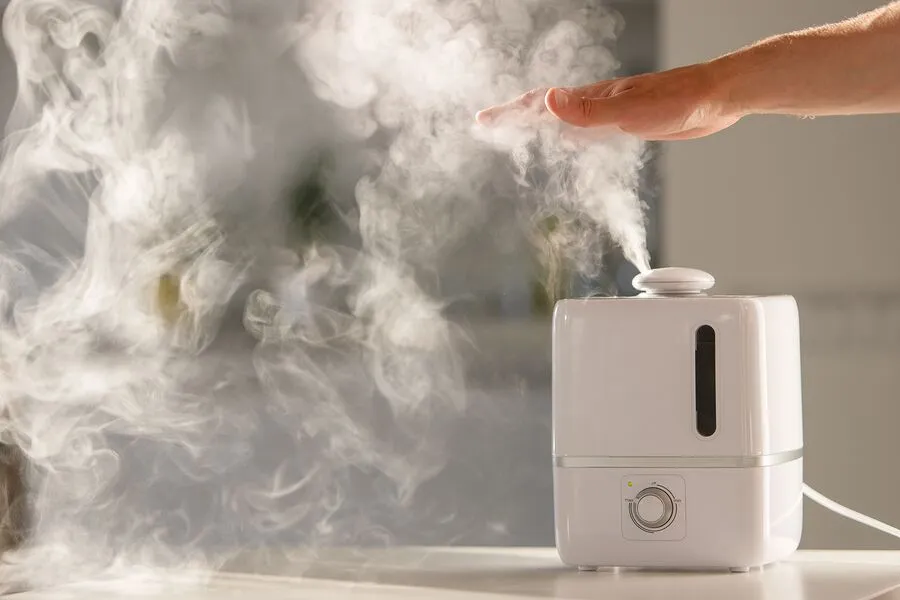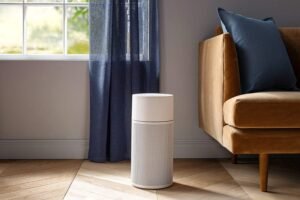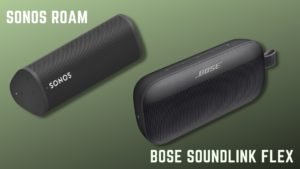
Whole house systems differ from portable units in that they’re hidden away in your ductwork near the furnace, cost just pennies per year to operate, and require virtually no maintenance.
Air duct humidifiers can be very effective at increasing the humidity in your home through the air ducts, helping prevent dry winter air, sinus problems, and itchy skin.
To prevent problems associated with dry air, hire one of the air care professionals from Anderson Air to install a humidifier in your house.
1. Cost
Whole house humidifiers differ from portable humidifiers in that professional installation is often necessary due to modifications made to ductwork. Hence they usually cost more to purchase and run than portable options.
That said, whole house humidifiers are more efficient than portable units because they have sensors to monitor humidity levels, and maintain or adjust them accordingly. Plus, they’re quieter, easier to use and cost less to run!
Humidity in the air can be beneficial to humans and pets alike, helping wood furniture and floors last longer while preventing static electricity that causes a static charge to damage hair and clothing.
Furthermore, humidity in the air also allows you to set back your thermostat during winter and save on energy bills as dry air feels colder, increasing heating costs as a result and making your home feel more drafty and cold.
2. Space
Home size is the single most significant determining factor in the cost of whole-house humidifiers, from 500 square feet up to 5,000 square feet units that correspond with price points. Larger spaces will require more robust units that will, as a result, cost more to purchase and install.
Places with colder weather often experience dry air that can lead to issues, including itchy skin and cracked lips, sinus issues and worsening medical conditions like asthma and allergies.
Homeowners experiencing such issues typically turn to portable humidifiers as an immediate fix; however, an integrated humidifier provides long-term relief by addressing all areas of their homes at once.

3. Energy
Having added moisture in the air can keep you warmer with lower thermostat settings, leading to energy savings and overall savings. Attaching a whole-house humidifier to your furnace or AC allows for uniform humidity control throughout your home without the hassle of moving a portable humidifier from room to room.
Running these whole-house units costs only pennies annually in terms of electricity, fuel, and water use compared with portable humidifiers.
4. Convenience
A whole house system, once activated by your heating system, runs continuously until it reaches the desired humidity levels in your home.
Moreover, whole-house humidifiers are suitable for larger homes as they can integrate with various heating systems. They work in tandem with your furnace blower system and fan to distribute regulated moisture throughout your entire house, offering superior accuracy and consistency than room-by-room controls.
Many systems also allow smart control integration to prompt changes via smartphone or tablet. This is incredibly convenient for when you’re away from home and need to adjust climate settings on the go.
5. Maintenance
Whole house humidifiers connect directly to your plumbing system to draw water vapor directly from your home’s water supply, making them virtually maintenance-free – aside from replacing humidifier pads each year and conducting a cleaning session using diluted vinegar at the end of the heating season to loosen mineral deposits in the water reservoir.
When considering a portable or whole house humidifier for your home, consult a professional air care technician. They will give you the best advice on the unit that’s perfect for your needs.




